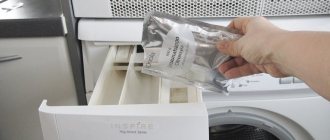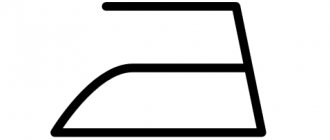Washing workwear: SanPiN requirements
(here you need a picture with different types of workwear)
Workwear includes medical gowns, chemical protection suits, work overalls and other uniforms. It is obvious that it is impossible to create a single standard that combines the requirements for all types of work clothing simultaneously. Separate regulatory documents have been developed for each industry, for example, for builders, the agricultural sector, and industrial enterprises, SanPiN 2.2.3.1384-03.2.2.3 has been adopted.
Where work clothes are washed depends on the type, degree of contamination, and difficulty of handling the fabric. Washing doctors' coats or kitchen workers' clothes is not much different from caring for linen at home: the uniform is boiled, bleached, and a stain remover is used. In this case, the employer can organize a laundry on its territory: one or two washing machines, an ironing board, and staff are enough.
It is more difficult to organize washing, cleaning, and decontamination of clothing, which should provide protection from hazardous substances. Such workwear should be washed where, according to SanPiN 2.2.8.46-03, all established rules are met. It doesn’t matter whether the laundry will be handed over to a special laundry or the company will be able to organize washing on its own.
Professional laundry and dry cleaning of workwear in Moscow
Professional laundries that provide services to organizations are complex, high-tech enterprises that use industrial machines for washing and drying clothes, as well as modern dry cleaning equipment. Our laundry is just such a business. Our entire process is structured in such a way that textile products are processed in the most automatic mode, which eliminates the human factor and improves the quality of services. Remote control systems for equipment and detergent dosing stations are configured for uninterrupted operation around the clock.
As a rule, laundry after washing in a professional laundry is always spotlessly clean, regardless of the type of contamination. However, products are not released to the client without quality control, since reputation in the very competitive service market in Moscow comes first for us. Before finishing processing (steaming, ironing), qualified personnel of our company inspect the products to eliminate possible remaining contamination. After finishing processing and before packaging the linen, a quality control system has also been introduced.
Since we are a direct service provider and work on our own state-of-the-art equipment, we can guarantee you that by handing over your laundry or workwear to us for dry cleaning, you will receive exceptional quality, for which we are financially responsible as the service provider.
VIEW RECORDING
Laundry for medical organizations | Service agreement
Washing of gowns and other types of workwear, as well as personal protective equipment for organizations is carried out…
VIEW RECORDING
Washing of linen and workwear | Profile Laundry for organizations in Moscow
Many organizations in Moscow constantly use the services of laundries and dry cleaners. For some this is necessary...
VIEW RECORDING
Washing or dry cleaning of workwear - what to choose for your organization?
Moscow is a large metropolis with a huge industrial and manufacturing sector within the region. Everything is o...
VIEW RECORDING
Washing and rental of terry linen for fitness and SPA
What do a fitness club and a laundry have in common? That's right, nothing. What do a good fitness club and a laundromat have in common...
VIEW RECORDING
Washing restaurant linen and textiles for decoration
Washing restaurant textiles. One of the most persistent stains on laundry are food stains, which...
VIEW RECORDING
Washing workwear | Laundry for organizations
Washing workwear for working professions in production and construction organizations in the laundry has a number of…
VIEW RECORDING
Laundry and Dry Cleaning, specifics of work and prices
Laundries and dry cleaners are organizations that provide household services to the population and organizations. Thus,…
VIEW RECORDING
Laundry is the right choice for a fitness club
Laundry for a fitness club is a necessity due to the specifics of the establishment. Good…
Show more LOADING... NO MORE ELEMENTS
Organization of washing
(here is a photo, for example, of an industrial laundry or smiling workers loading bales into a machine)
Legislation allows management to independently decide how to organize the care of things.
- If the work is carried out by a third-party company, a contract is concluded.
- Your own laundry must comply with the requirements of the supervisory authorities: Sanitary and Epidemiological Station, Fire Department, as well as labor safety standards. The rules for organizing laundries are regulated by GOST R 56247-2014.
While strict standards are imposed on the “technical” side, no rules have been developed for the “bureaucratic” side. However, regulatory authorities may require reports and evidence that the clothes are actually washed.
At the same time, the tax office will be interested in expenses, the Labor Inspectorate will be interested in compliance with workers’ rights, and sanitary inspectors will be interested in compliance with standards. Moreover, each of these structures can seriously complicate the life of the employer by imposing penalties, monetary or administrative.
To avoid the need to comply with the requirements of supervisory authorities, it is easier to conclude an agreement and transfer responsibilities for the care of workwear to special organizations. It is important to ensure that the contract specifies the type of contamination and confirms in writing the readiness of the company providing the service to comply with the requirements of SanPiNs and GOSTs.
Careful documentation that reflects the entire “life” of the workwear will help you cope with any inspection:
- Workers should have access to laundry schedules that will allow them to hand over dirty uniforms and receive clean uniforms.
- The receiver, either his own or a third party company, must record the movement of each item in a log. In order to be “identified”, it must be provided with special labels.
- The manager must timely issue orders regulating the washing procedure, replacing sets according to the season, etc.
The procedure for issuing PPE at the enterprise
According to the regulations described above, the employer is obliged to issue PPE based on specific working conditions, as well as in accordance with the gender, age and size of the employee. In other words, employees who work in conditions of high noise are issued PPE for the hearing organs (hearing headphones, ear buds, helmets), employees working in conditions of polluted air are issued PPE for the respiratory organs (gas masks, RPE, self-rescuers), etc.
We invite you to read: Cancellation of a court order: a sample objection to a court order for debt collection
Step 1. In internal regulations, the employer specifies the categories of employees (or specific departments) to whom PPE is issued. Based on the provisions of the current legislation, the enterprise establishes standards for the issuance of personal protective equipment, the period for wearing them, the replacement procedure, etc.
Step 2. The management of the enterprise appoints a person who is responsible for the issuance of personal protective equipment, their replacement, repair, storage, etc. Depending on the specifics of the enterprise’s activities and the characteristics of the organizational structure, this person may be an employee of the production department (usually a line manager) or a warehouse worker (warehouse manager or senior storekeeper). The person responsible is confirmed by issuing an appropriate order.
The employer is obliged to issue PPE to employees in strict accordance with current legislation, as well as with the standards established at the enterprise. Control over compliance with these requirements is assigned to the person responsible for issuing PPE, whose name and position are approved by the relevant order.
As a rule, the issuance of workwear is entrusted to an employee directly related to special working conditions (chief or senior production foreman). If we are talking about a large enterprise that has several categories of employees who need to be issued different PPE, then in this case the responsibility for issuing lies with the warehouse workers (warehouse manager or senior storekeeper).
The organization has the right to appoint several employees who will share responsibility for issuing PPE. For example, a warehouse employee may be responsible for the issuance procedure, monitoring the wearing period and replacement of PPE, while an employee of the household department may take on the work of ensuring the storage and maintenance of workwear.
The law does not approve the form according to which the employer is required to issue an order appointing a person responsible for personal protective equipment. The document is drawn up in free form, indicating the required details:
- name of company;
- date and document number;
- Full name and position of the manager approving the order.
We invite you to read: Cancellation of a court order - sample objection
The order must indicate the full name and position of the responsible person, as well as clearly and concisely list his responsibilities. For example:
- issuance of personal protective equipment;
- control over compliance with the wearing period;
- provision of storage and maintenance (laundry, repairs);
- maintaining a log of personal protective equipment;
- control over the return of personal protective equipment in specified cases (after the wearing period expires, upon dismissal of an employee, etc.).
Washing schedules
(here is the washing schedule)
The schedule according to which clothes will be washed is developed based on several factors:
- Standards established by industry SanPiN.
- Instructions for washing workwear are on labels.
- The nature of the work performed.
- Employer requirements for the appearance of employees.
To ensure that everyone receives their uniform on time and that the laundry operates as normal, it is necessary to maintain order. There are no requirements for the washing schedule of workwear by standards or supervisory authorities. It is important that it is convenient to use.
Usually the schedule indicates:
- the name of the person responsible;
- teams or names of employees:
- day of handing over the workwear for washing;
- completion marks.
The schedule should be located in an accessible place. It can be “sliding” and change, for example, every month, or it can be permanent.
Paperwork
Accounting is carried out “from both sides”: each employee can check the schedule and check how many sets he has in stock. The receiver who accepts items keeps a Laundry and Repair Log.
The Logbook for washing and repairing workwear reflects:
- Date of acceptance and issue of the item.
- Name, number of products, their numbers, other accounting parameters.
- Additional requirements: need for repairs, stain removal, dry cleaning.
- Signature of the responsible person.
If workwear is handed over to a third-party organization, the cost of the service is immediately fixed.
The employer is obliged to provide the employee with clothing, but he may also require a report on where and when it is located. The laundry and clothing repair log is the main document on the basis of which you can track the condition of your workwear. In addition, it is he who helps to report to supervisory authorities.
Timing and frequency of washing
They depend on the specifics of the industry and the characteristics of the textile. Intersectoral rules OT No. 36, approved on June 17, 2003 by the Ministry of Labor, establish that work clothes should be washed:
- depending on contamination - once every 6-10 days,
- at livestock farms, dairies, wastewater treatment plants - once every 3 days.
Employees are also required to notify the administration of the need to clean and repair workwear.
How to properly organize the washing of PPE
- At the enterprise itself.
- In a third party organization (laundry).
Organizing a laundry at an enterprise is a labor-intensive process that must take into account SanPiN (2.1.2.2646-10), Resolution of the Ministry of Labor No. 75 of 10/16/2000. A special room and staff are allocated for the laundry. The nuances of the arrangement of premises are described in POT R M 013-2000. But an agreement for the provision of laundry services is only concluded with a third-party laundry service.
Internal documents regulate the procedure for delivery and acceptance of special clothing: by each employee individually, centrally in workshops, separate departments, etc. The process of sending and returning the robe is specified in the contract. The employees themselves do not deliver or collect their own PPE from the laundry.
This is interesting
Laundry workers are also provided with special clothing, which must be cleaned at least once every 7 days.
Washing schedule and documents
The legislative framework does not yet provide for specific periods for washing workwear. But the employer is still obliged to carry out laundry at his own expense.
A workwear washing schedule helps to debug the issue of washing frequency. The organization must develop a “Regulation on the issuance of PPE” with an attachment in the form of a schedule.
Degree of contamination of workwear
(illustration showing degrees of contamination and powder consumption)
“Dirty” workwear is a relative concept. A small stain on a doctor's coat makes it dirty and unsuitable for further use. It must be washed regardless of the schedule. The overalls of a worker who works in a dusty workshop becomes dirty already in the first working hours. However, you can wear it for several shifts.
The degree of contamination of workwear is an important factor used in calculating the consumption of washing products, mode, time, water temperature, that is, monetary expenses that may be of interest to the tax authorities.










